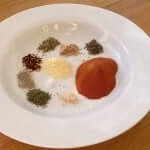So much has changed on our wonderful, blue-green planet since 2012 and I’m not just talking about our climate. Sure, that’s not great, but thanks to a whole lot of thoughtful and smart people, there are now lots of easy ways that we can change our behaviour and contribute to a better planet by reducing single use plastic from our lives.
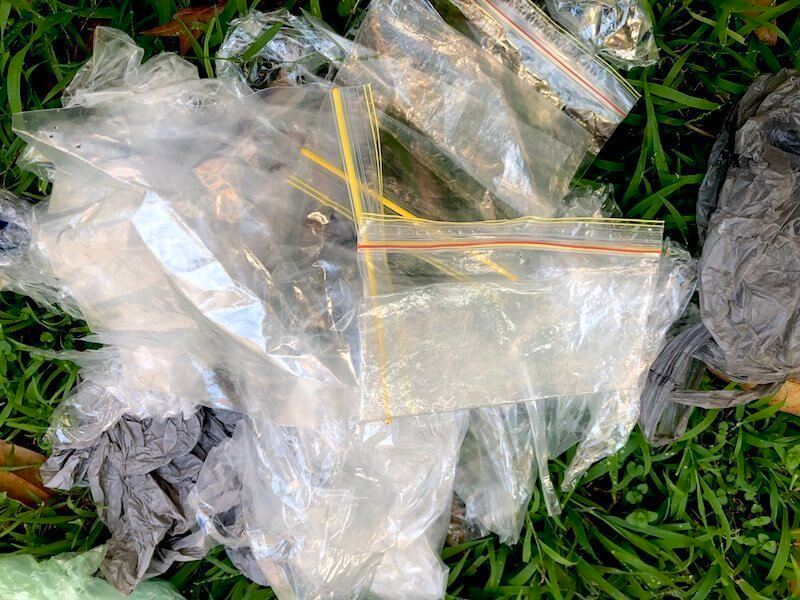
Why 2012 you ask? Well, that was the year I started this blog/site and YouTube channel and back then I used to think very differently about how to carry food and other items in the bush. I confess that I am embarrassed at the amount of ziploc bags I used to use in the outdoors… and often just once.
We all know that harsh and sudden change is never easy, but over the last couple of years I’ve been gradually cutting back and finding smarter ways of carrying food to reduce single use plastic from my bushwalks and hikes.
I’m certainly not a shining example of doing absolutely everything I can to reduce my use of plastic overall, but I’m making step changes along this journey. It’s only now, looking back, that I realise I haven’t bought a box of ziploc bags for years and I’m amazed at how I never thought I’d do without them.
Here’s what I now use instead:
Reuse : Product Bags
This is my number one tip and how I managed to reduce my single use plastic bag use significantly. Although the super-hard-core types will see this as a compromise, I truly believe that it’s the little-by-little, step change that helps bring about long term success. Fact is, I still buy products that come in plastic bags – conveniently for me – most of these have ziploc closures. The best part is that these bags are incredibly tough and can withstand much more wear than a standard ziploc. My favourites include:
- Frozen berries
- Felafel balls
- Dried mushrooms
- Frozen dumplings
- Dried fruit
I currently keep my fire-lighting kit in a frozen berry bag and also use them for trail breakfasts (pre-packed with muesli, milk powder and dried fruit) and dinners. These are the most robust of any bag I have. I also use these for my toilet waste bag.*
These bags are manufactured and approved for food in the first place and can withstand use after use. Bomb proof!
I’m also a fan of the Simply Fine Food Company brand of wrap bread, as they come in re-usable, re-sealable coated brown paper bags.
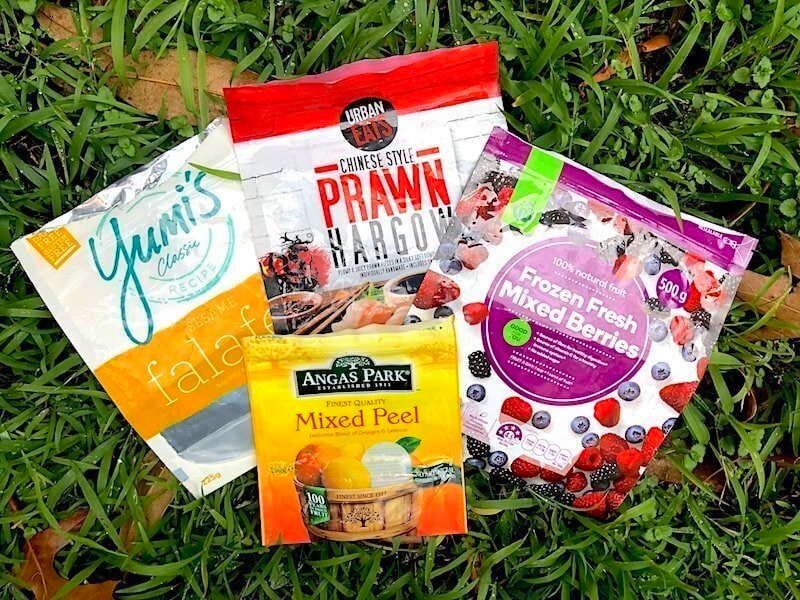
Use : Wax Wraps
Depending on the season and temperature that I’m going to be walking in, I can usually get away with keeping some things in wax wraps. I’ve found them particularly good for fresh greens for lunches as they don’t cause the veggies to sweat. Because there’s a bit of rigidity to the wrap, it creates spaces around the items you’re wrapping (unlike a mesh produce bag) and so helps to protect the food from damage. I’ve had success with:
- Mixed leaves
- Snow peas
- Sprouts
- Capsicum
- Carrot sticks
- Spring onions
You can buy wax wraps or make your own!
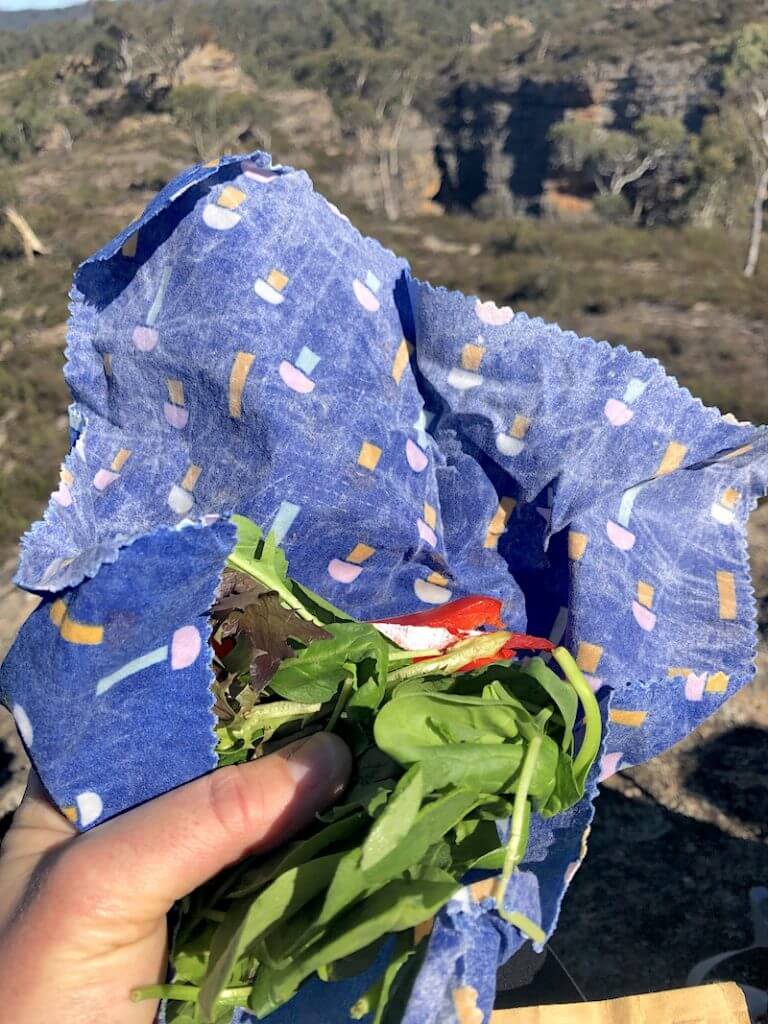
Reuse : Lightweight Plastic Bottles and Jars
There are some types of food that don’t do well when squished between your first aid kit and your stove… that is of course, unless you want to make your own fresh tomato sauce as you walk.
I’ve been re-purposing a few different varieties of plastic product bottles (again, originally manufactured for food) to carry things like felafel balls, cherry tomatoes and chutney or pickles to go with lunch. Given the choice, I would try to buy these types of foods in glass or BYO container to a co-op, but if not available, I know I can repurpose the containers from these products:
- Yoghurt containers (Jalna brand has resealable lids)
- Gatorade or Staminade powder containers (500g-ish)
- Tinned fruit in plastic jars with resealable lid (eg. peaches, apricots)
- Spreads (Nutino, honey, peanut butter) plastic jars
- Vitamin jars

Silicone Bags
If you’re trying to keep the weight of your backpack down (that should be most of us!), then unfortunately, you’ll find the commercially available re-useable silicon bags to be quite heavy.
The best I’ve found in terms of weight is Stasher brand. I’ve been using a sandwich size one for scroggin for a couple of years and like the easy seal and at 75 grams is one of the lightest I’ve found.
I’ve also tried Kappi brand, where it’s sandwich size bag (including it’s separate slide closure) weighs in at a hefty 132 grams. Although very robust, having a separate closure doesn’t really make good sense in the bush… just another thing to carry or get lost. I’ve relegated this test bag to my kitchen for storage there.
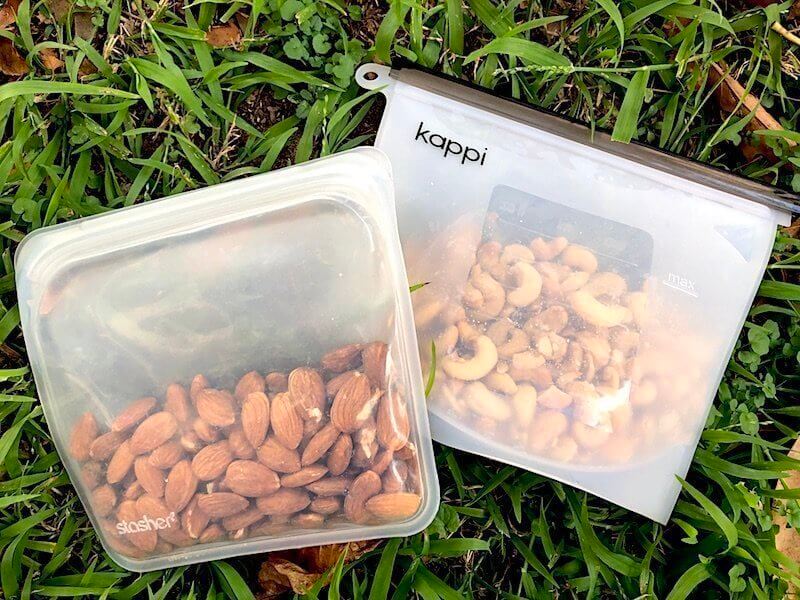
Other Options
As more and more of us decide to make little changes, there are smart folk out there coming up with new solutions. Some other options that might work for you are:
- 100% cotton bags or wraps, with waterproof lining – often with velcro seals eg: Keep Leaf or Sachi brands
- Nalgene (or similar) containers come in loads of solutions
- Tupperware or similar style containers
- Reused Takeaway food containers
Recycle / Compost
Harder to find and potentially more expensive in the long run are biodegradable bags. These are generally breathable (so not good for waterproofness/leaky stuff), made from plant start and can be put in the compost bin.
- BioBag resealable (compostable, made from plant starch)
If you must buy new : Reusable Bags
If you find that there are some items that you can’t manage to store or carry in the above options, or that you can’t pull yourself away from traditional ziploc bags, try looking for bags made from tougher plastic (and plastic alternatives) that can be washed and reused many times. There’s a few options in this style:
- Sinchies re-usable bags and wraps
- Full Circle reusable sandwich bags
*Ya really don’t want to mix up which bag you bring to dinner!



